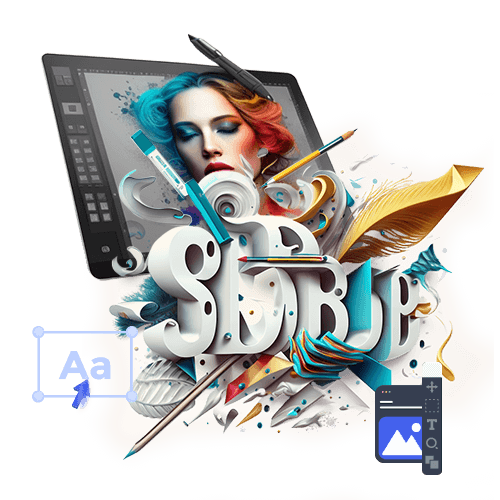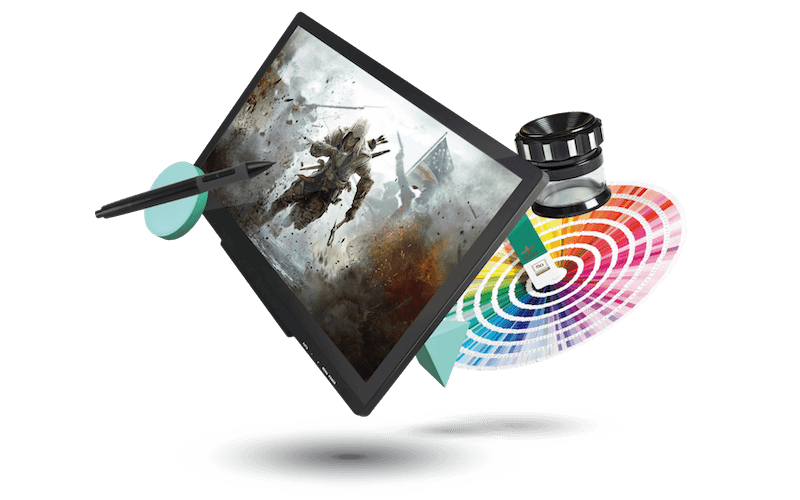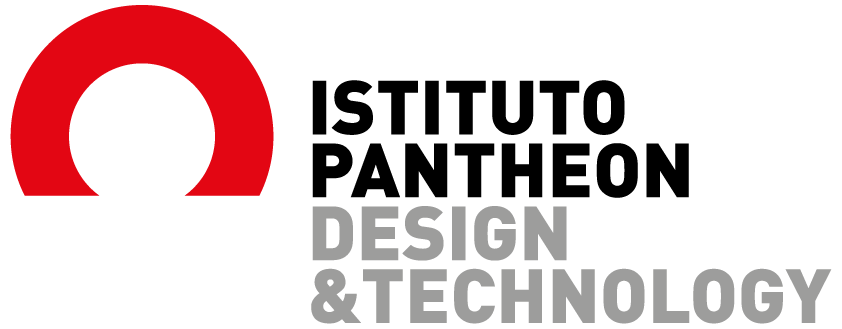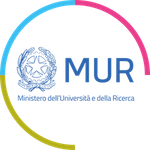Graphic Design
GRAPHICS - COMPOSITION - LETTERING
Learn the rules of Graphic Design, find out how to design logos, coordinated images and targeted communication campaigns.

DESCRIPTION
ACADEMIC DIPLOMA PROFILE

SKILLS
- Office suite
- Adobe Illustrator
- Adobe InDesign
- Adobe Photoshop
- Adobe Audition
- Adobe Premiere
- Adobe After Effects
- Davinci Resolve
- Rhinoceros
- Asana
- Concept Board
- Blender
- WordPress
PROFESSIONAL FIGURES
Students of the First Level Academic Diploma in Graphic Design will be able to work as freelancers in graphic studios, communication agencies, publishing houses, television channels, and web agencies in positions such as:
- Graphic Designer
- Motion Graphic Designer
- Web Designer
- UI-UX Designer
- Art Director
PROGRAM
PROGRAM
1° YEAR
Computer Graphic
The course provides students with the tools and strategies necessary to create a graphic design project using IT means. In fact, at the end of the course students will be able to modify and model images, such as photographs or vector images, up to the realization of a well-defined project. In particular, students will acquire tools and methods related to the structural setting of a correct hierarchy of elements.
Mass Media Theory and Method
At the end of the course, students will know the most important models of communication, the history and theories of media and the main research paradigms on the influence of mass media in society, as well as the characteristics of community and of online communication, to autonomously master the knowledge related to the birth and evolution of mass media applied to multimedia.
Design Methodology
Starting from the study of well-known projects like exhibition set-ups, trade fair stands and set-ups of outdoor spaces through the deconstruction of creative processes, we want to develop a design methodology applicable to any creative process. The acquisition of this understanding and the consequent development of critical tools, with respect to the perceptual phenomena that are the basis of any cognitive development, will allow you to acquire the knowledge and develop a creative production starting from observation and through the scientific method.
Technical and Project Design
The course aims to lay the foundations to learn technical drawing, both on the theoretical level and on the professional-practical one, through the knowledge of common elements of graphics, tools for technical drawing, graphic constructions, metric scales, basic elements of orthogonal projections, through the projection, rotation and section of solids, axonometric projections and techniques for architectural metric survey.
Graphic Design 1
Through both theory and practice, students will acquire knowledge of the history of the font, morphology, classifications and the different meaning of lettering: from the typeface to the digital one, from the character as an expression to the material.
The course will help the student in the choice of character, in the use of appropriate weights and hierarchies based on the context. The course will also deal with themes related to lettering, such as cages, editing, media from paper to new printing techniques.
Digital photography
The course highlights the importance of photographic language as a tool for communication, expression and research both on a theoretical and a practical level. It provides the necessary teachings in order to develop and understand the importance of composition, to know the techniques of indoor and outdoor shooting, the treatment of sensitive material both in analogue and digital, the technology of the camera, the choice of equipment, the ‘exposure and measurement of light, the language of optics, landscape photography and professional studio photography, developing a specific knowledge of the photographic language.
Languages of Contemporary Art
Through modernity, the historical avant-gardes, the transformations of the work of art between the fifties and seventies, up to the postmodern era and the current globalized world, the history of artistic trends and practices is continually placed in relationship with geography, culture, history.
The relationship between art and history (cultural, social, political transformations) and between art and cultural contexts is fundamental for understanding the relationships between works and contexts, the artists’ poetics, theoretical perspectives, the system of museums and exhibitions.
Aesthetics of visual arts
The course aims to introduce the ways in which the concept of “Aesthetics” is articulated in disciplines such as history of art, favoring its theoretical aspects focused on the problem of knowledge of internal and external realities, through the relationship between analytic and imaginary reason, in a condition of continuous exchange.
Fondamenti Di Informatica
The aim is to respond adequately to the challenge launched by the job market, not only through knowledge and deepening of cultural and technical areas, but also through the “tools” to use to carry out the process.
To master an adequate tool is an indispensable condition for achieving a valid and productive goal for our work needs.
English
The goal of this course is to help students to increase their language skills up to an intermediate level – B1 according to the Common European Framework of Reference for Languages (CEFR) – through a gradual path.
PROGRAM
2° YEAR
History of art and costume
The course will make students acquire the ability to read works of art, to recognize the various styles and their aesthetic and technical differences and to understand the links between different technologies and the influences of political and socio-economic systems in the development of cultural and artistic expressions. They will start from the analysis of the main themes of the Neo-avant-gardes and work their way up to the concepts and protagonists of the latest trends in contemporary art, from the Informal to the Neo-object.
History of Press and Publishing
The purpose of the course is to trace the main lines of the history of printing and publishing from its origins to the present day. Particular emphasis will be given to the knowledge of the different techniques of book production, to the events that have marked the historical path of the book and to its main agents of change.
Computer Science for Graphics
The course presents the main aspects related to the use of information and communication technologies, with a specific and “practical” regard to the Internet and the World Wide Web. It will focus on the acquisition of a good level of manual skills with the main software and languages for web design.
Graphic Design 2
In the exercises, students will have the opportunity to try their hand at “real” projects, they will have to relate to “real” clients and overcome the difficulties that can also be encountered in the world of professional work. They will do an analysis of the places and materials to be used in the project.
3D Modeling
The course will give students knowledge and in-depth study of commands and techniques for the visualization and spatial verification of each design idea and the production of basic three-dimensional drawings directly from the model. The possibility of applying the modeling technique ranges from mechanics, to design, to architectural drawing.
Virtual Architecture
The purpose of the course is to offer the skills to design in a 3D studio Max environment and create “photographic” images with the V-ray rendering engine which is the most popular rendering plug-in currently on the market.
Web Design 1
The course aims to train designers in the development of a static or dynamic website using HTML and CSS languages. It will deal with graphic design of contents and the approach to the most popular CMS.
Advertising
The course will allow the student to have an overview of all the strategic and operational activities that characterize the job of the communicator in the business area (the client) and in the agency area (the professional operator), starting from the main notions related to business communication (marketing), advertising and public relations.
In particular, the course will deepen those activities that can create added value and increase brand reputation, leveraging the combination of the cultural and business world, translating a cultural marketing and public relations plan into image communication.
Economy and Graphics Market
The course analyzes the concept of graphics starting from its economy, its internal organization, and takes the concepts of originality and identity as its guiding line. The first part of the course reviews the fundamental stages of graphics in Europe in general and in Italy specifically, with forays into the contemporary world. The second part analyzes the semiotic dynamics of advertising production following the creation of a true contemporary narrative that revolves around the concept of the brand.
PROGRAM
3° YEAR
Graphic Design 3
The course aims to create design awareness on the subject of image and communication, structure and graphic expression, using creativity as a driving force from conception to implementation.
Web Design 2
The course aims to train designers in the development of a dynamic website based on CMS (content management system) using HTML and CSS languages and developing the knowledge of modules and plugins.
Digital Video
The course is a workshop where you can experiment with digital technology in the video field. Practice and theory have a parallel trend in order to activate multiple views on the various genres in which video technology is applied. The individual exercises of shooting, writing, editing and the analysis of audiovisual material belonging to different genres are very important. These exercises have as their purpose the research and experimentation of language and of the medium, preliminary to any classification.
Video Editing
Provide theoretical and practical knowledge on Non Linear Editing systems, of the main video editing software, post production software and color correction software.
Assembly Techniques
Learning to communicate through editing is the purpose of the course, which alternates the theoretical approach with the field test, testing the skills of individual students in the management of different materials. By analyzing sequences of films, documentaries, commercials and video clips, the elements that distinguish the different forms of audiovisual textuality will be questioned and then the theoretical skills acquired in the practical field of desktop editing will be transferred using some of the most popular software.
Elements of Editorial Graphics
The course aims to develop general skills in the field of editorial production through a methodological path. The creative process of editorial graphics will subsequently be transferred to the various application areas, from hemerology to non-fiction, up to institutional communication and editorial packaging to conclude with editing for the web and new technological frontiers
Internship
Students will be able to carry out an internship at a company or a professional studio in order to follow the development of a project from its conception to its realization, collaborating with professionals in the sector and practicing what they have studied.
Thesis
Each student will have to carry out a personal research work, through a written paper or a project, that will be discussed at the time of graduation.
First Level Academic Diploma authorized by MUR (Ministry of Education, University and Research)
with Ministerial Decree prot. No. 943 of 1 December 2016.
FILL OUT THE FORM
to receive more information.
We will contact you within a few hours.


